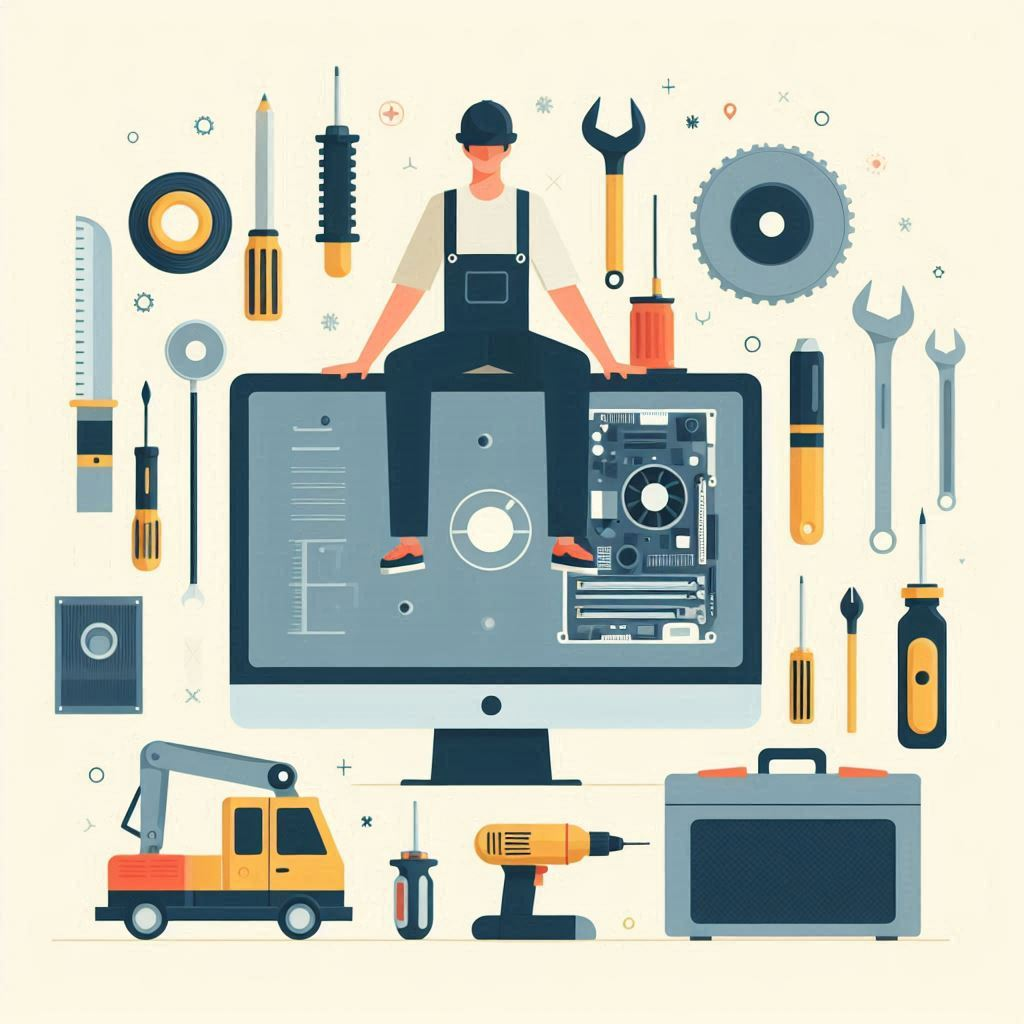Posted On 18 Jul 2024
In today’s digital age, encountering computer issues is almost inevitable. Whether it’s sluggish performance, software glitches, or hardware malfunctions, knowing how to address these problems can save you time and money. DIY computer repair can be a cost-effective solution, but it’s essential to approach it with caution. In this guide, we’ll explore the dos and don’ts of DIY computer repair to help you navigate troubleshooting effectively.
Understanding the Dos of DIY Computer Repair
When it comes to DIY computer repair, certain practices can help you effectively troubleshoot and resolve common issues. Here are some essential dos to keep in mind:
- Backup Your Data: Before attempting any repairs, always back up your important data to prevent loss in case of unforeseen complications. Use external hard drives, cloud storage, or backup software to create secure backups of your files and documents.
- Research Thoroughly: Take the time to research the specific issue you’re experiencing and familiarize yourself with potential solutions. Online forums, tech blogs, and tutorials can provide valuable insights and step-by-step guides for troubleshooting.
- Use the Right Tools: Ensure you have the necessary tools and equipment for the repair task at hand. Basic tools like screwdrivers, anti-static wristbands, and thermal paste applicators are essential for hardware repairs, while software troubleshooting may require diagnostic software and recovery tools.
- Follow Proper Safety Precautions: When working with computer hardware, prioritize safety to avoid accidents or damage to components. Disconnect the power source, ground yourself to discharge static electricity, and handle delicate parts with care to prevent damage.
- Document Your Process: Keep track of the steps you take during the repair process, including any changes or adjustments made to the system. Documentation can help you retrace your steps if needed and provide valuable information for future reference.
Avoid These Common Don’ts of DIY Computer Repair
While DIY computer repair can be empowering, certain practices can do more harm than good if not approached correctly. Here are some common don’ts to avoid:
- Ignoring Safety Guidelines: Neglecting safety precautions when working with computer hardware can result in severe consequences, including damage to components or personal injury. Always follow safety guidelines and best practices to minimize risks. Ensure that you:
-
- Wear anti-static wristbands to discharge static electricity and prevent damage to sensitive components.
- Disconnect the power source and remove batteries from laptops before attempting any repairs to avoid electrical shocks.
- Use proper tools and equipment, such as screwdrivers and pliers, designed for computer repair to prevent accidents and injuries.
- Work in a well-ventilated area to prevent the buildup of heat and minimize exposure to potentially harmful fumes from soldering or cleaning solutions.
- Rushing the Process: Patience is crucial when it comes to DIY computer repair. Avoid rushing through troubleshooting steps or skipping essential checks. Take your time to diagnose the issue accurately and follow a systematic approach.
- Disregarding Warranty Coverage: If your computer is under warranty, attempting DIY repairs may void the warranty. Check the warranty terms and consider professional repair services if applicable.
- Overlooking Professional Help: Some computer issues require expertise beyond DIY repair. Don’t hesitate to seek professional assistance when needed. A qualified technician can diagnose complex problems and provide effective solutions.
- Experimenting with Advanced Repairs: While learning and experimenting are valuable, avoid tackling advanced repairs (such as soldering components) unless you have the necessary skills and experience. Incorrect handling can lead to irreversible damage.
Remember that DIY computer repair can be rewarding, but it’s essential to strike a balance between self-reliance and seeking professional help. By following the dos and avoiding the don’ts, you can maintain your computer effectively and save money in the long run









